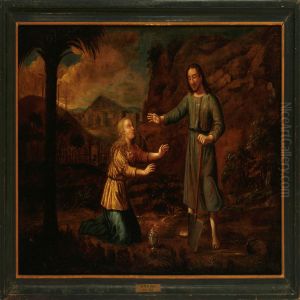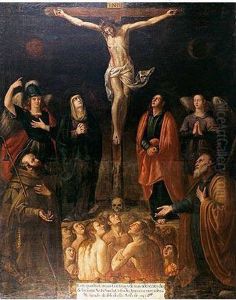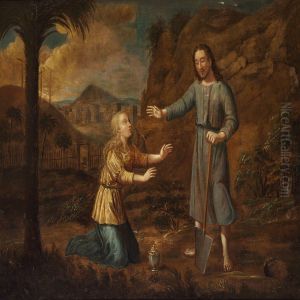Felipe Gil De Mena Paintings
Felipe Gil de Mena was a Spanish painter who worked during the Baroque period, a time characterized by its grandiose and detailed artistic style. Born in Valladolid in 1634, Gil de Mena was part of a family of artists, which included his father, Alvaro de Mena, who also served as his early teacher and mentor. Despite the early influence of his father, there is not much documentation about his artistic training or his early career. However, it is known that he developed a style that was heavily influenced by the prevailing Baroque trends of dramatic lighting, rich colors, and intense emotional expression.
His work mainly consisted of religious paintings, as was common for the era, with a focus on altarpieces and other devotional images. Gil de Mena's art was particularly noted for its vivid depiction of saints and figures from the Bible, imbued with a sense of piety and devotion that was well-suited to the Counter-Reformation climate in which he worked. Despite being less well-known than some of his contemporaries, his works were appreciated for their clarity of composition and the vividness of the figures he portrayed.
Unfortunately, Gil de Mena's work did not gain the widespread recognition that some of his contemporaries enjoyed, and as a result, many of his paintings have been lost or remain unidentified. He remained active in Valladolid throughout his career, which likely contributed to his relative obscurity compared to artists who worked in larger cultural centers such as Madrid or Seville. Felipe Gil de Mena died in 1693, and while his work did not have a significant influence on the course of Spanish art, it remains a representative example of Spanish Baroque painting, reflecting the religious fervor and stylistic preferences of his time.


